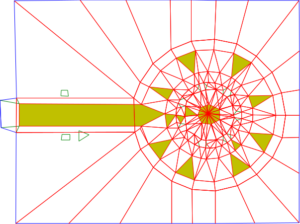I thought I’ve said all what I wanted to say about the current events but apparently life constantly gives new reasons to rant.
Unlike many other people, I don’t believe in some deity but rather in a concept of idiocy. More specifically I believe that (as St Wabuu said) most of the humans are so stupid (thinking is a very energy consuming effort after all), idiocy is a side effect of human imperfection and can be eradicated only with the humanity itself, and that if there’s a way to do some idiotic thing somebody will do it (the Darwin Awards and news from Florida keep proving this version of Murphy’s law). Overall, there’s an abundance of idiocy around us and in the last two years it really demonstrated how our lives can be turned to the worse.
2020 (all ~730 days of it) can be called The Year of Arrogant Idiots. The origin of the virus is not relevant for this case (even if it spawned a lot of bickering and misinformation campaigns), but how it grew into the pandemic and how it was handled afterwards is very relevant. Mostly it is remembered for the things like #hugachinese campaign initiated by some Italian mayor (after all, having a close bodily contact with a stranger not merely removes the stigma but also should decrease the chances of transmission for any disease) and the various things from “trust me, I’m a doctor” people.
By those I mean primarily WHO and various heads of local healthcare systems but others qualify as well. I doubt you can give a better explanation why it was so hard to accept that the virus is primarily transmitted by air (even if it does not fall into “airborne” classification for some purely theoretical reasons), that calling it “mild” did not help things, or that the virus gives a mildsevere damage to the immune system so betting on herd immunity and exposing children to it was a dubious idea at best. And that’s not counting all the people who think they know even better and thus can ignore the known facts for being inconvenient (I feel they resort to a circular reasoning “masks/vaccines do not work because we won’t allow those to be used on us”). Thanks guys, without you this year would not be as crappy or as long!
The following 1939 (all 700 days of it and counting) can be called The Year of Selfish Idiots (not that the other idiotic traits are in short supply, it’s just this particular one has been driving this year down). The year started when a certain group of people (if they deserve to be called people at all) decided to act on their beliefs that occupying and plundering another country would do them more good than developing their own country instead. I can understand the initial period of confusion when good decisions were hard to make, but it was followed mostly by the decisions that can be called short-sighted only if you’re a complete diplomat.
You may not like Ukraine or not care about it at all but you should realize that if the aggressor is not stopped it won’t be satisfied with that and will use the resources and people from captured territories to attack other countries (they’re not even hiding the plans of not merely expanding to former USSR borders but conquer Finland, Poland and maybe other bits of Europe). And if some selfish idiot thinks that USA will be left alone and does not need to help other countries at all—well, russians believe Alaska is rightfully theirs as well as a bit of California, and that’s not talking about the whole “USA is our greatest enemy and should be destroyed” rhetoric. Also that’s not counting empowering other terrorist states like Iran, DPRK and that part of Yemen (who also build their ideology on hating USA).
There’s a miniature version of all of this in Israel—it has a certain person who valued staying as a prime minister more than serving his country, whose efforts to grow terrorist threat finally came to fruition last year. And he’s still friends with russia because it’s friends with other terrorist states (at least that was his excuse).
So what other countries do? Follow their selfish interests that hurt them in the long run: here in Germany we had at least two chancellors who willingly traded German interests for cheap russian gas (some argue it’s been a tradition since 1980s when they decided that cheap gas from USSR is more important than supporting Polish struggle for independence), or, in more recent events, the previous minister of defence is remembered for not doing anything with the significantly increased defence budget except giving her son a ride on a helicopter. Or there’s a situation where Europe decided to help Ukraine with munition but because of some selfish idiots who wanted to sponsor domestic industry more than to fulfil the pledge the promised amount has not been delivered (resulting in a current stalemate on the front-line). Speaking of Europe, those countries that try to help russia for cheap resources forget that being a russian ally makes you their backstabbing target (so far I think only Germany in WWII period evaded that fate—by backstabbing first). And there’s USA where politicians decided that their local political ambitions are a good reason to hold foreign aid hostage.
As I mentioned earlier, such decisions may have bad consequences for the whole world and for their country as well (but if the politicians made sane reasonable decisions I’d not have a reason to name them selfish idiots). And if you say “it’s the will of the people” then those people are no different (at least they may have an excuse for not having an idea about things outside their backwater town). America got great not all by itself but rather by setting the rules by which other countries agreed to play, and thus not eliminating the threat to the system (and russia openly declares ruining this system as one of its goals) will only lead to the downfall of USA. The same can be said about Temporarily Occupied West Taiwan which started to prosper only after its involvement in the world trade—a position which a certain selfish idiot will likely sacrifice for small territorial gains.
I don’t know why it’s just last two years. There are no facts (known to me at least) that show any factors causing the recent sharp increase in idiocy in human population. So it looks more plausible to me that the overall idiocy kept accumulating until the already stressed supports of society finally gave way under overload and external crises.
Do I think the situation can be improved? Hardly. The majority of population will be against any kind of reforms (especially where people are expected to think and/or to learn) for the obvious reason that I don’t need to repeat. So even if the current issues will be resolved, what prevents it from repeating again? After all we still have not learned a lesson from the pandemic (IMO people just got tired and decided to pretend that the virus does not matter and those frequent disruptions due to many people still falling ill from it also do not matter) and a frank and unambiguous statement from Temporarily Occupied West Taiwan that it intends to occupy the rest of Taiwanese territory and why should we hope that this upcoming conflict will be handled in a better way?

